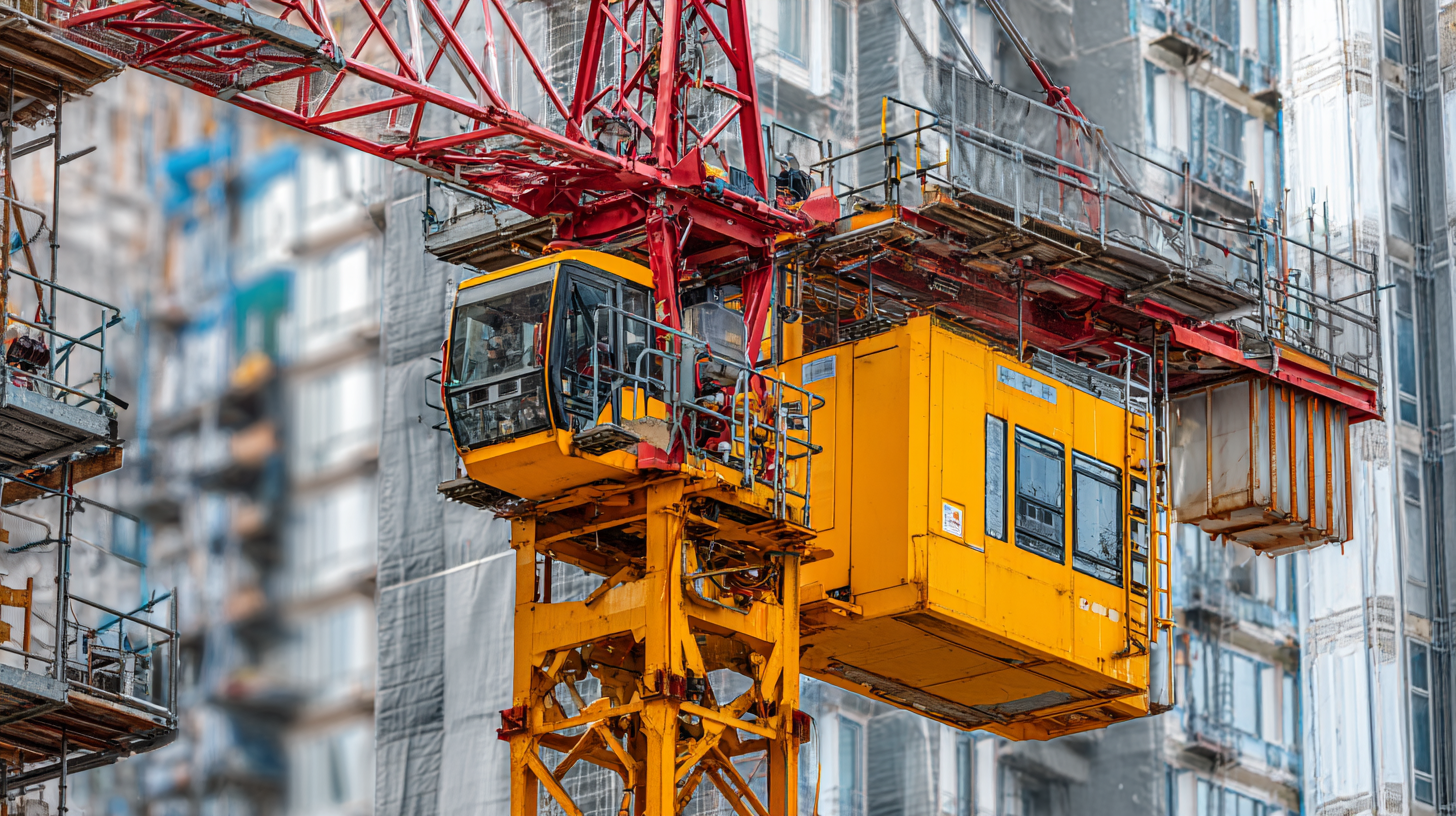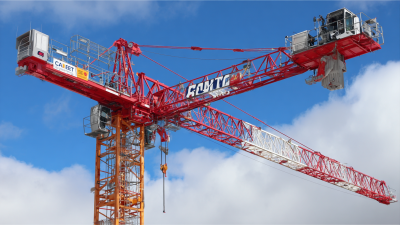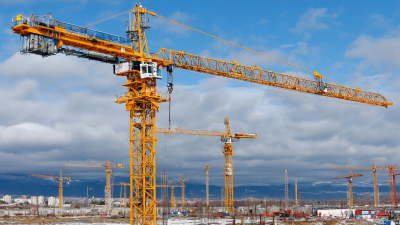In the ever-evolving landscape of construction technology, the role of the Tower Crane Mobile has become increasingly significant. This powerful machinery is pivotal in enhancing productivity and efficiency on construction sites, allowing for the seamless lifting and movement of heavy materials. Understanding the dynamics of Tower Crane Mobile is essential for construction professionals seeking to optimize their operations and ensure safety standards are met.

This comprehensive guide delves into the functionality of Tower Crane Mobile, exploring its mechanisms, advantages, and best practices for operation. Whether you are a seasoned contractor or a newcomer to the field, gaining insights into the intricacies of this machinery will equip you with the knowledge needed to navigate the complexities of modern construction projects effectively.
Tower cranes are pivotal in modern construction, offering versatile mobility that enhances their operational efficiency. Understanding the essential components that contribute to tower crane mobility is crucial for maximizing their functionality on job sites. The key mechanisms include the slewing system, which allows the crane to rotate 360 degrees, and the luffing mechanism, enabling the boom to be raised or lowered at variable angles. These components work in tandem to provide precise movement, making it easier to place materials in hard-to-reach areas.
Additionally, the crane's mobility is complemented by its foundation design, which is critical for stability during operation. Most tower cranes are equipped with a climbing mechanism that allows them to ascend as the building height increases. This is often achieved through a process known as "jumping," where the crane is raised alongside the structure. The combination of these components— slewing, luffing, and climbing mechanisms—ensures that tower cranes can adapt to complex site conditions, thereby improving safety and productivity in construction projects. Understanding these elements equips operators and project managers with the knowledge to efficiently utilize tower cranes in various applications.
The efficiency of tower cranes is significantly influenced by their load capacity, which varies across different operational environments. According to the International Cranes and Specialized Transport (ICST) association, the maximum lifting capacity of tower cranes can range from 10 tons to over 80 tons, depending on the model and design. This capacity plays a critical role in determining how well a crane can perform in tasks such as high-rise construction, particularly in urban settings where space is limited and loads are frequently transported to significant heights.
Moreover, environmental factors such as wind speed and ground stability affect the operational efficiency of tower cranes. A report from the American Society of Civil Engineers (ASCE) notes that tower cranes can experience reduced efficiency in high-wind areas, necessitating adjustments to their load capacities and operational tactics. For instance, when wind speeds exceed 20 mph, cranes may be required to reduce their load capacity by 25% or more to ensure safety, thereby impacting construction timelines and project costs. Understanding these dynamics allows construction companies to optimize crane selection and operational strategies, ensuring both safety and productivity are maintained throughout the construction process.

When it comes to operating tower cranes, adherence to safety protocols is paramount. Industry standards, such as those outlined by the Occupational Safety and Health Administration (OSHA) and the American National Standards Institute (ANSI), emphasize the need for rigorous safety measures to minimize risks. For instance, cranes should undergo regular inspections and maintenance checks, which are essential for identifying wear and tear that could lead to operational failures.
Tips: Always ensure that the crane operators are certified and trained in safety protocols. An annual refresher course can help operators stay updated on the latest safety standards and best practices.
Moreover, statistical reports indicate that about 90% of crane accidents result from human error, highlighting the need for stringent guidelines. Implementing a comprehensive safety plan that includes hazard assessments, as well as clear communication channels during operations, can significantly reduce the likelihood of accidents.
Tips: Establish a safety checklist prior to the start of every job. This should include equipment checks, site assessments, and confirming that all team members understand their roles during operations.
Weather conditions significantly influence the performance and mobility of tower cranes, impacting construction efficiency and safety. Adverse weather elements such as strong winds, heavy rain, or snow can compromise the stability and operational capabilities of cranes, posing risks on-site and leading to project delays. For instance, cranes are typically rated to operate safely within specific wind speed limits; exceeding these can result in necessary shutdowns, which disrupt workflows. This sensitivity to environmental factors underscores the need for advanced monitoring technologies that can provide real-time data to operators, ensuring informed decision-making during inclement weather.

Recent advancements in monitoring technologies, such as 4D point cloud-based spatial-temporal semantic registration, are addressing existing limitations of traditional surveillance methods like CCTV and IoT devices. These innovations capture detailed spatial information and depth, enhancing the accuracy of construction activity monitoring. With the recent addition of a new mobile harbor crane at the Port of Dover, aimed at boosting operational productivity, the necessity for precise weather impact assessments and responsive mobility solutions in crane operations becomes increasingly critical. As construction projects evolve, understanding the intersection of weather dynamics and crane functionality will be essential for optimizing performance and safety on construction sites.
The landscape of tower crane technology is evolving rapidly, driven by innovations that enhance operational flexibility. Recent industry reports indicate that advancements in automation and remote control capabilities are revolutionizing how projects are managed. For instance, a study by McKinsey & Company highlights that construction efficiency could improve by up to 30% through the implementation of smart crane systems. These systems not only optimize logistics but also allow operators to manage multiple cranes from a single interface, significantly reducing downtime.
Tips: To maximize the benefits of these innovations, construction managers should invest in training personnel on new technologies. By ensuring that teams are proficient in using advanced systems like enhanced load monitoring and remote diagnostics, companies can mitigate risks and improve safety standards on-site.
As sustainability becomes a crucial focus, manufacturers are developing tower cranes equipped with eco-friendly technologies. According to a Green Building Council report, cranes that use electric power instead of diesel have the potential to cut emissions by over 50%. This shift not only meets regulatory demands but also aligns with the growing market preference for greener construction practices.
Tips: Regularly assess your machinery’s energy consumption and explore options for transitioning to more sustainable alternatives to meet both operational and environmental goals.






